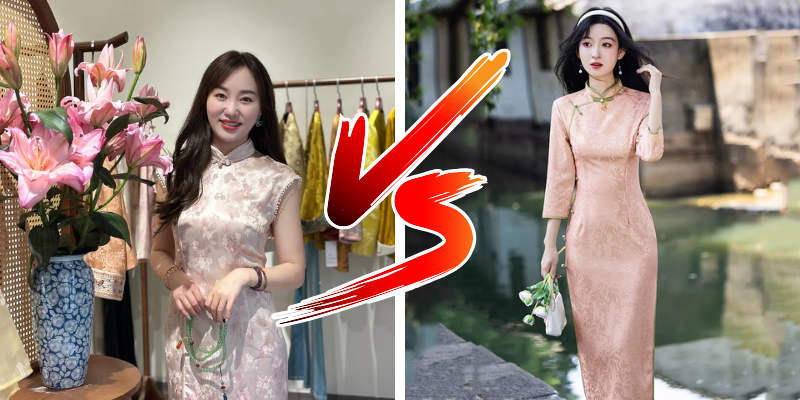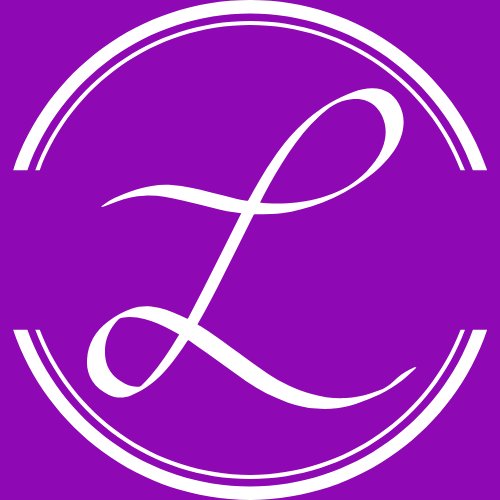
Qipao vs. Cheongsam: Which Style Suits Your Modern Wardrobe?
Share
In the world of modern Chinese fashion, few garments are as iconic as the qipao and the cheongsam. Both garments represent Eastern elegance, luxury craftsmanship, and rich cultural heritage, yet they are often misunderstood or used interchangeably in conversation. Whether you are exploring Shanghai-inspired fashion, investing in high-end apparel, or simply looking to infuse Asian heritage into your wardrobe, understanding the differences between the qipao and cheongsam is essential.
This article will guide you through their historical origins, key design differences, occasions for wearing them, and styling tips to help you decide which garment best fits your modern lifestyle.
The Origins: Qipao vs. Cheongsam
Both the qipao and cheongsam originated from traditional Chinese dress, yet they emerged in slightly different contexts:
Qipao (旗袍):
The term “qipao” originally referred to a loose, robe-like garment worn by Manchu women during the Qing Dynasty. It was a long, straight-cut dress with high necklines and often featured side slits for ease of movement. Over the centuries, the qipao evolved into a more form-fitting silhouette, especially in the 1920s Shanghai era, which marked the birth of modern Chinese high fashion.
Cheongsam (长衫):
While often used interchangeably with “qipao” in English, cheongsam literally means “long shirt” and traditionally refers to a long, straight-cut dress for men, though it has become synonymous with the women’s qipao in many Western references. In contemporary fashion, cheongsam tends to retain a slightly more classic, formal structure compared to the sometimes more experimental qipao designs.
Understanding this historical background is key to appreciating how LUXE ORIENTA and other modern designers reinterpret these styles for today’s wardrobe.
Key Differences Between Qipao and Cheongsam
1. Silhouette and Fit
Qipao: Modern qipaos are typically form-fitting, accentuating the body’s natural curves. They often feature high side slits and tailored darts that hug the waist and hips.

Cheongsam: Cheongsams often retain a straighter, looser silhouette, which provides a more conservative and formal look. They may be less body-hugging, making them versatile for different body types.

2. Collar and Neckline
Qipao: High, Mandarin-style collars are a signature feature, often fastened with frog buttons or discreet zippers. Some modern qipaos incorporate slightly lower or asymmetrical necklines for contemporary appeal.

Cheongsam: Typically features a rigid Mandarin collar or a stand-up collar, offering a classic, elegant profile suitable for formal occasions.

3. Fabric and Patterns
Qipao: Modern qipaos often feature luxurious fabrics like silk, satin, and brocade, embroidered with floral motifs, florasis, or abstract designs. The patterns may also reflect contemporary artistry, bridging Eastern heritage with global fashion trends.

Cheongsam: Traditionally uses solid colors or subtle patterns, emphasizing refinement and timeless elegance. It often showcases intricate craftsmanship, such as jacquard weaving, hand embroidery, or silk thread accents.
4. Sleeves
Qipao: May vary from sleeveless to short or three-quarter sleeves. Designers often experiment with sleeve length to create modern, versatile variations.

Cheongsam: Generally features longer or three-quarter sleeves, maintaining a formal, classic aesthetic.

5. Occasion Suitability
Qipao: Perfect for cocktail parties, weddings, evening events, or occasions where you want a statement, fashion-forward piece. The modern cut allows for movement while remaining elegant.

Cheongsam: Ideal for formal events, cultural ceremonies, or office-appropriate attire, especially in styles that emphasize modesty and tradition. It communicates understated elegance without sacrificing sophistication.

Styling Tips for Modern Wardrobes
Integrating a qipao or cheongsam into your contemporary wardrobe requires balancing tradition with modern fashion sensibilities. Here are some practical tips:
1. Pairing with Accessories
- For qipaos, add modern heels, minimalist jewelry, and a clutch for evening elegance.
- Cheongsams pair beautifully with pearl necklaces, classic pumps, and structured handbags for formal occasions.
2. Layering
- Qipaos can be layered with blazers or cropped jackets for a professional-chic look.
- Cheongsams can be paired with longline coats or silk scarves to enhance elegance in cooler weather.
3. Footwear Choices
- Modern qipaos allow for experimentation — try strappy heels or bold boots.
- Cheongsams often look best with classic pumps, loafers, or ballet flats to retain a timeless feel.
4. Color Coordination
- Opt for vibrant silk or floral prints for qipaos to make a statement.
- For cheongsams, solid jewel tones or muted pastels emphasize sophistication and are easier to style with accessories.
5. Occasions and Context
- Casual or semi-formal events: Short-sleeve qipao or modern mini cheongsam styles can add a touch of heritage without appearing overly formal.
- Formal occasions: Full-length qipao or long cheongsam with high-quality fabrics like silk or jacquard ensures a luxury appearance suitable for weddings, gala dinners, or cultural celebrations.
Modern Interpretations by LUXE ORIENTA
LUXE ORIENTA exemplifies the fusion of tradition and contemporary style, offering qipaos and cheongsams with modern tailoring, luxurious fabrics, and innovative patterns. The brand emphasizes:
Luxury craftsmanship: Hand-embroidery, floralis designs, and premium silk ensure each piece is a work of wearable art.
Versatile design: Pieces suitable for both daywear and special events, appealing to global fashion-conscious consumers.
Cultural heritage: Every garment reflects Asian heritage and Eastern elegance, staying true to Chinese dressing traditions while embracing contemporary aesthetics.
Whether choosing a qipao with bold prints or a cheongsam with understated elegance, LUXE ORIENTA allows you to express individuality while celebrating cultural identity.
Qipao or Cheongsam? Choosing the Right Piece for You
When deciding between a qipao and cheongsam, consider:
Occasion: Evening party or wedding? Go for a qipao. Formal cultural or office event? Cheongsam fits best.
Fit Preference: Do you prefer body-hugging silhouettes or classic straight cuts?
Style Statement: Are you making a bold, artistic statement (qipao) or embracing timeless sophistication (cheongsam)?
Comfort & Movement: Modern qipaos are designed for freedom of movement, while cheongsams offer modest elegance.
Ultimately, both garments can complement a modern wardrobe, allowing you to rotate between statement pieces and refined classics depending on your personal style and occasion.
Conclusion: Embracing Tradition in a Modern Wardrobe
The qipao and cheongsam are more than traditional Chinese garments; they are symbols of heritage, elegance, and cultural craftsmanship. Integrating these pieces into a modern wardrobe allows wearers to celebrate Eastern aesthetics while staying stylish and versatile.
With guidance from LUXE ORIENTA, you can explore the modern interpretations of these iconic garments, selecting styles that suit your lifestyle, occasions, and personal aesthetic. Whether you choose the curve-hugging qipao or the timeless cheongsam, both options allow you to carry Asian heritage, luxury craftsmanship, and Eastern elegance into the 21st century.
Related articles:
The Modern Qipao: How Millennials and Gen Z Are Redefining Traditional Chinese Fashion
How to Accessorize Your Qipao: Shoes, Jewelry, and Makeup Pairings
The Symbolism Behind Qipao Patterns: Dragons, Peonies, and Cultural Motifs
Famous Celebrities Who Rocked the Qipao on Red Carpets
Top 10 Qipao Trends in 2025: Colors, Fabrics, and Patterns
How to Style a Qipao for Every Occasion: Weddings, Parties, and Office
Qipao Evolution: From Traditional Chinese Dress to Modern Fashion Icon
